The Elephanta caves are located in Elephanta Island, Mumbai, India.
These Caves are marked as one of the famous ancient architectural temple in India.
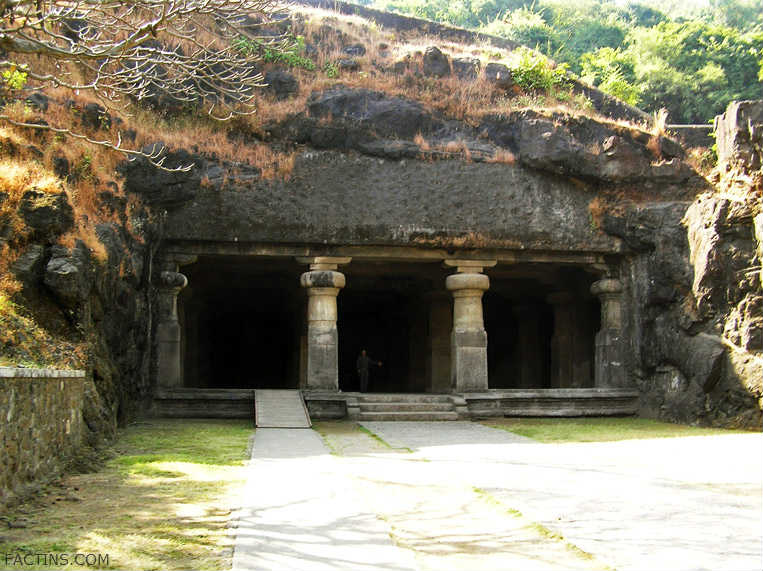
The caves were designated a UNESCO World Heritage Site in 1987 as per the cultural criteria of UNESCO: the caves “represent a masterpiece of human creative genius”.
It consists of two groups of caves – the first is a large group of five Hindu caves, the second, a smaller group of two Buddhist caves.
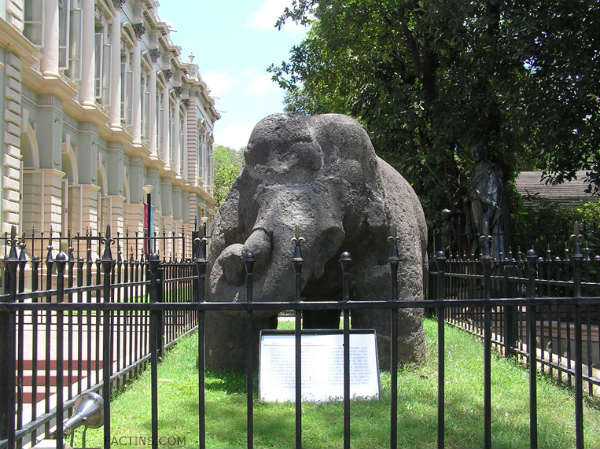
The Hindu caves contain rock cut stone sculptures, representing the Shaiva Hindu sect, dedicated to the Lord Shiva.
The rock cut architecture of the caves has been dated to between the 5th and 8th centuries (1500 years back).
Exact history and builders of Elphanta caves are still not clear.
Some historian believes that great warrior prince of Chalukya dynasty Pulesin II built the temples to celebrate his triumph while some others suggest that these caves were built by the Kalchuri King Krishnaraja in 6th century AD, it that works the age of Elephanta Caves are about 1400 years.
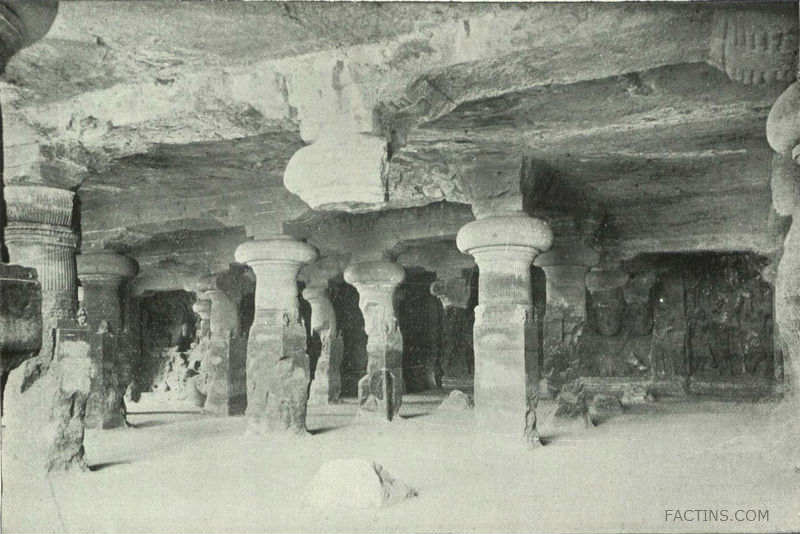
Elephanta was called Puri or Purika in 635 AD, and marked as the capital of the Konkan Mauryas.
The history saying that the Elephanta caves ruled by many of the rulers like Konkan Mauryas, Chalukyan dynasty, Gujarat Sultanate and Portuguese.
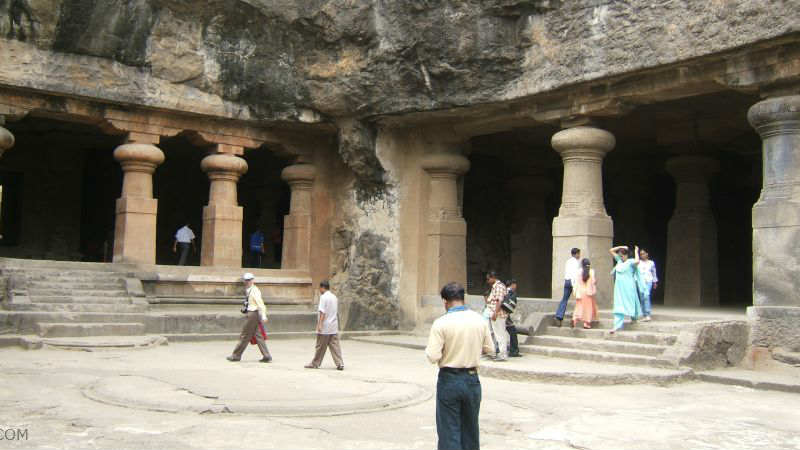
The Main Layout of Elephanta Caves are Main Hall, East Wing Shrine and West Wing Shrine.
Main Hall:
Main Cave : It is also called as Shiva cave (Great Cave), it is 27 sq. m with a hall.
Each of the wall of Shiva cave is more than 5 m in height.
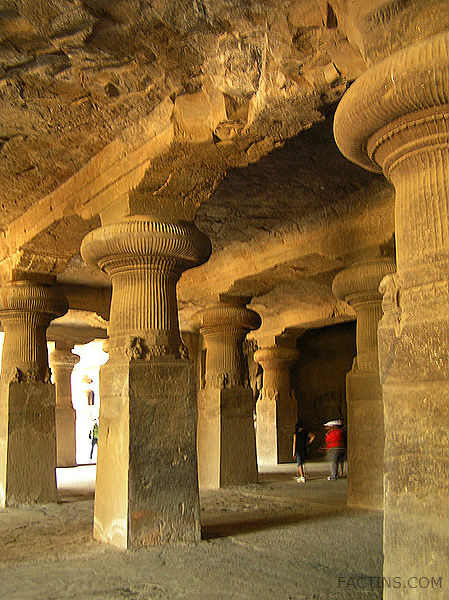
The central Shiva relief Trimurti is located on the south wall with Ardhanarisvara and Gangadhara.
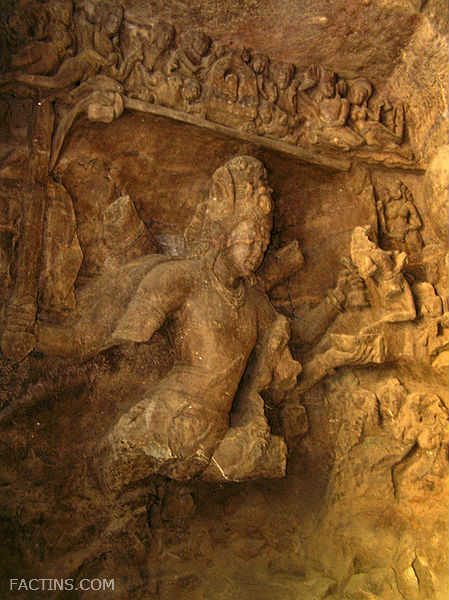
The main cave blends Chalukyan architectural features such as massive figures of the divinities, guardians, and square pillars with custom capitals with Gupta artistic characteristics, like the depiction of mountains and clouds and female hairstyles.
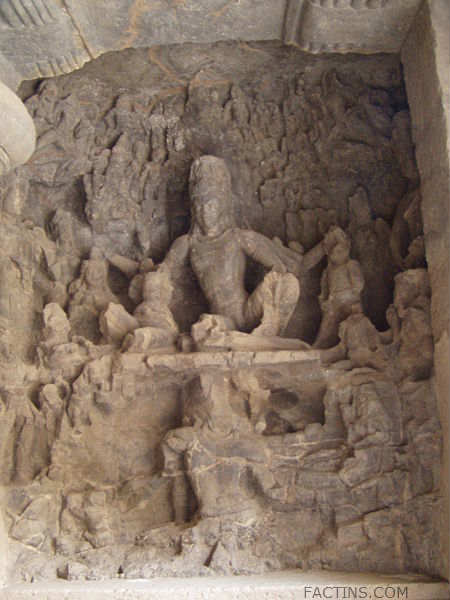
Ardhanarishvara: In the chamber to the east of the Trimurti is the four-armed Ardhanarishvara carving.
It is 16.75 feet (5.11 m) in height.
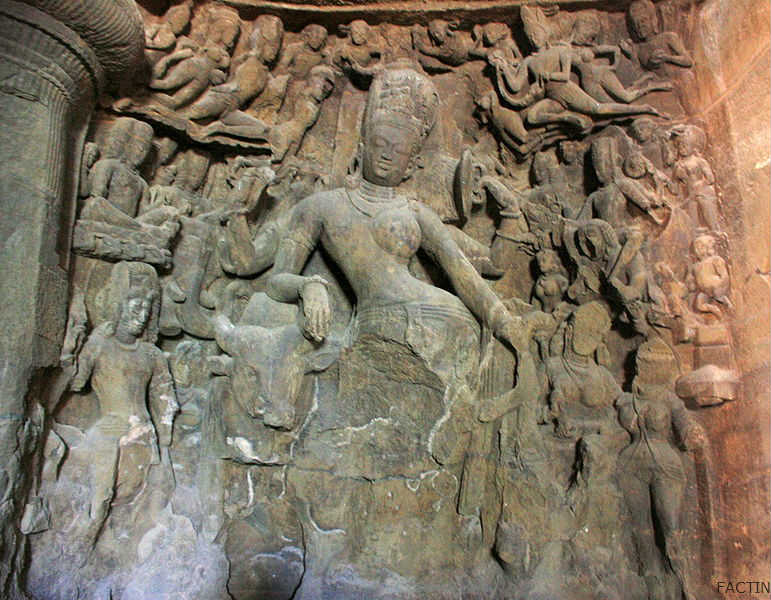
It has a headdress with two pleats draped towards the female head (Parvati) and the right side (Shiva) depicting curled hair and a crescent.
Trimurti: Described as a “masterpiece of Gupta-Chalukyan art”, the most important sculpture in the caves is the Trimurti, carved in relief at the back of the cave facing the entrance, on the north-south axis. It is also known as Trimurti Sadashiva and Maheshmurti. The image, 20 feet (6.1 m) in height, depicts a three-headed Shiva, representing Panchamukha Shiva. The three heads are said to represent three essential aspects of Shiva: creation, protection, and destruction.
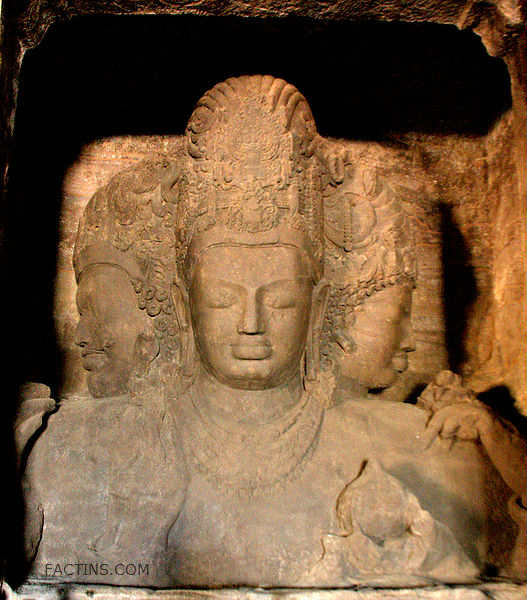
Gangadhara: The Gangadhara image to the right of the Trimurti is an ensemble of divinities assembled around the central figures of Shiva and Parvati
The former bearing the River Ganges as she descends from heaven.
The carving is 13 feet (4.0 m) wide and 17.083 feet (5.207 m) high.
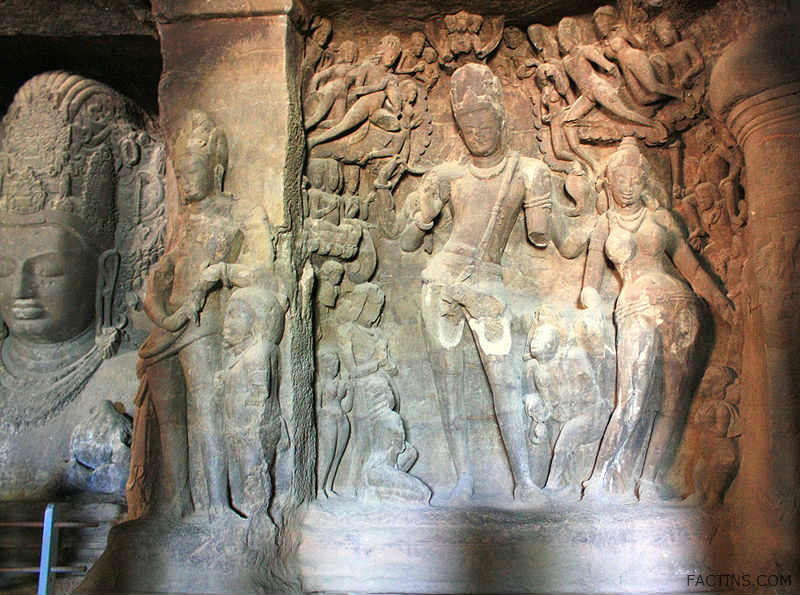
Nataraja: The panel carving in the west niche opposite Yogishvara depicts Shiva as Nataraja performing the Tandava (cosmic dance).
The niche is 13 feet (4.0 m) wide and 11 feet (3.4 m) high.
The Shiva image displays a dance pose and had ten arms.
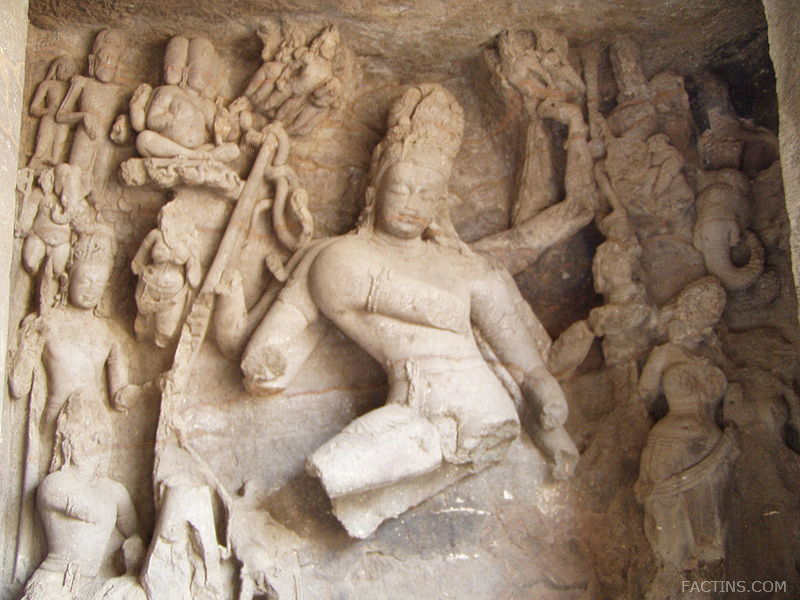
The first right, third left hands and legs are damaged.
Yogishvara: The panel to the east of the north portico is Shiva in a Yogic position called Yogisvara.
Shiva is in a dilapidated condition with only two broken arms.
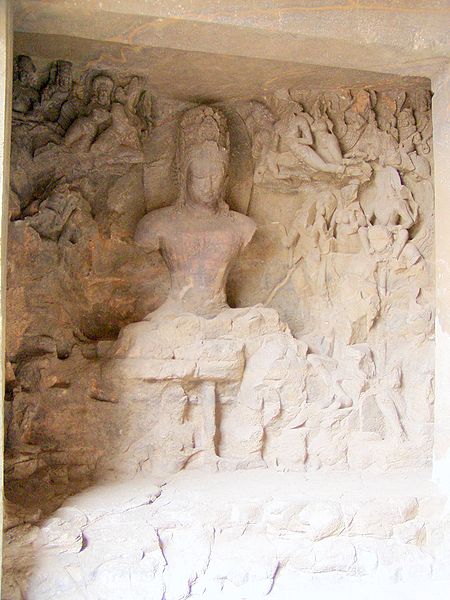
Shiva is seated in padmasana yogic posture (cross-legged) on a lotus carried by two Nagas.
East Wing Shrine:
The west wall depicts eight mother goddesses known as Matrikas.
Leogriff : On each side of the steps leading to the temple-cave portico is a winged lion, or leogriff, each seated with a raised forepaw.
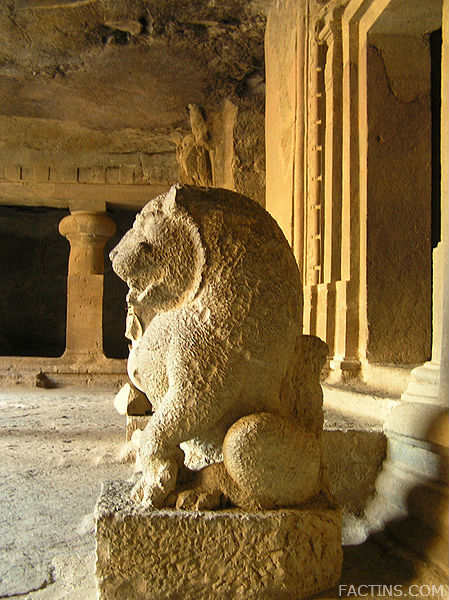
Near the east end, is a gigantic statue of a four-armed doorkeeper with two attendant demons.
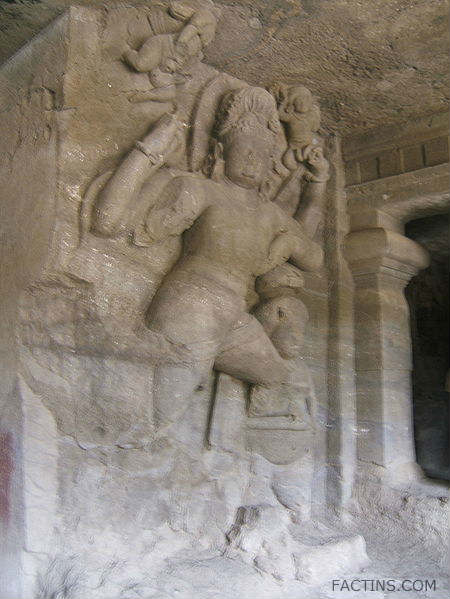
Dvarapala: The central shrine is a free-standing square cell, with entrances on each of its sides. Each door is flanked by two dvarapalas (gate keepers).
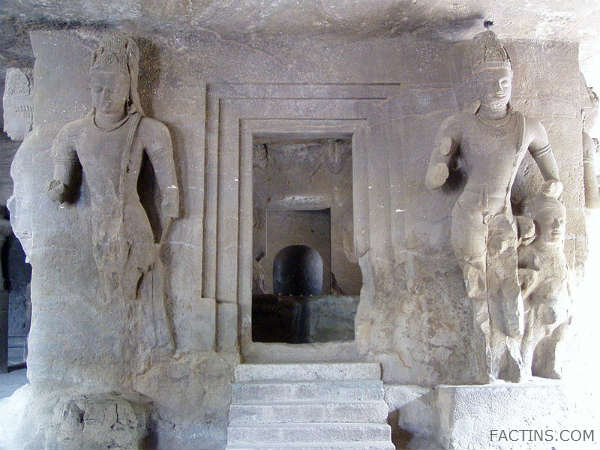
The height of the eight dvarapalas varies from 4.5 – 4.6 m.
West Wing Shrine:
The west wing, entered through the main cave, but it is in half damaged position.
It has a small chapel and a cistern enclosed within the pillared cave, which is believed to be Buddhist.
Small Cave: The interior has suffered water damage.
The portico is 85 feet (26 m) long and 35 feet (11 m) deep.
The Linga is lost of the small cave.

See More Facts ..

